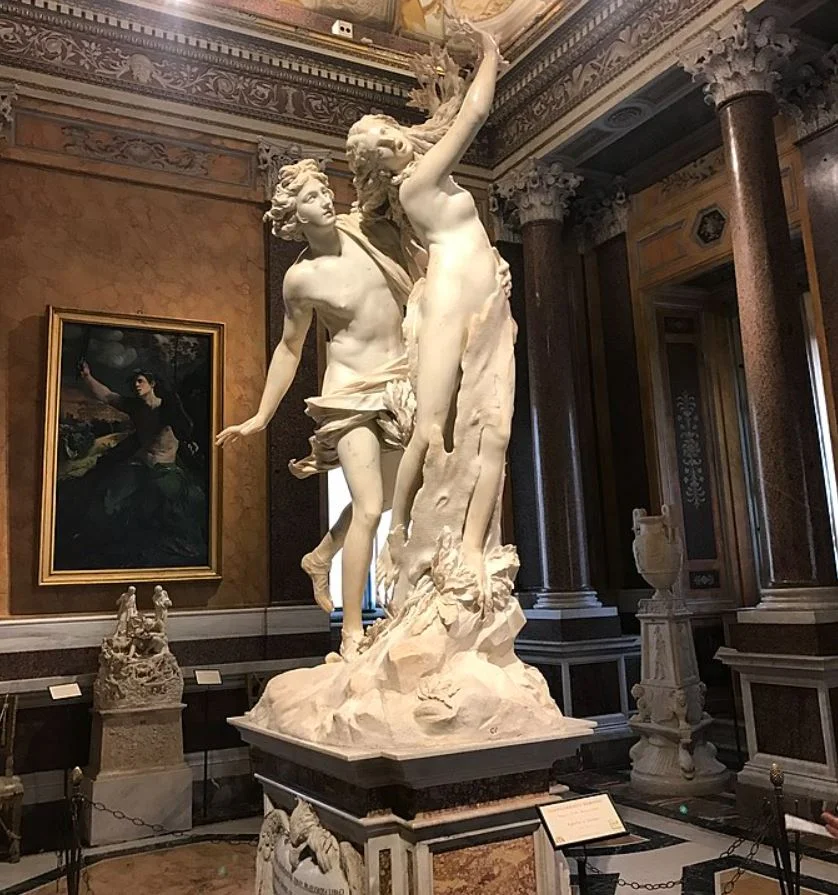One of the most fascinating sculptures of the Baroque era was created by one of the most renowned Baroque artists in history, Gian Lorenzo Bernini (1598-1680).
In this article, we’ll take a closer look at some of the most interesting facts about Bernini’s Apollo and Daphne, one of the most famous sculptures in the artist’s oeuvre.
1. It was created early on in the artist’s career
Apollo and Daphne is one of the most fascinating marble sculptures created by the man who is considered to have invented the Baroque style of sculpture, Gian Lorenzo Bernini.
The artist was more than a sculptor, though, as he’s also known as an architect and city planner who left his permanent mark on the city of Rome. His most famous works include various fountains in Rome, numerous works inside St. Peter’s Basilica, and St. Peter’s Square in front of one of the most famous churches in the world.
This particular sculpture was created in the early stages of his extended career and was completed between 1622 and 1625.
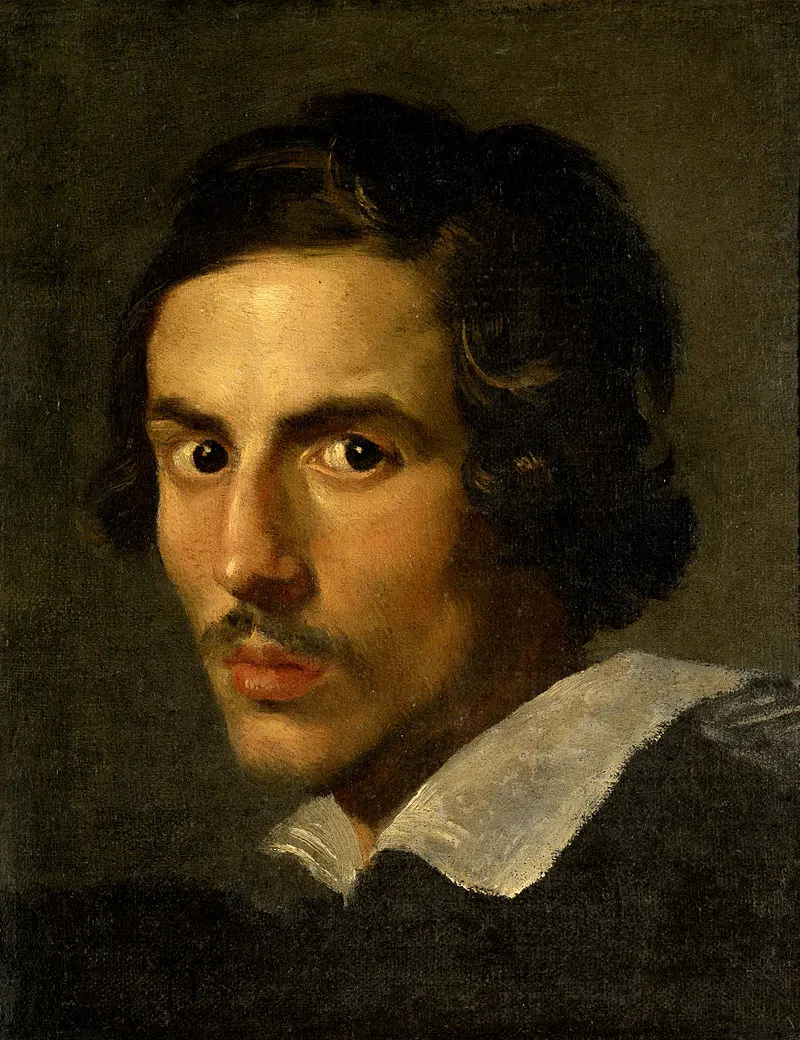
2. It depicts a story from Greek Mythology written by a Roman poet
The subjects of the sculpture are Apollo and Daphne, both figures from Greek Mythology. The scene depicts the conclusion of the story written by Roman poet Ovid in his work called “Metamorphoses.”
It’s written in the form of a poem and describes the history of the world all the way to the time the writer lived around 8 A.D. This ranges from the deification of Julius Caesar followed by the rise to power of the first Roman Emperor, Caesar’s nephew Augustus.
We can see the moment that Apollo, who was struck by Cupid’s love-exciting arrow, is chasing Daphne, who was struck by the love-repelling arrow of Cupid.
Daphne, the daughter of the river god Peneus, prays to her father to save her and she is being transformed into a tree. her arms become waving branches and her body is being surrounded by a thin bark.
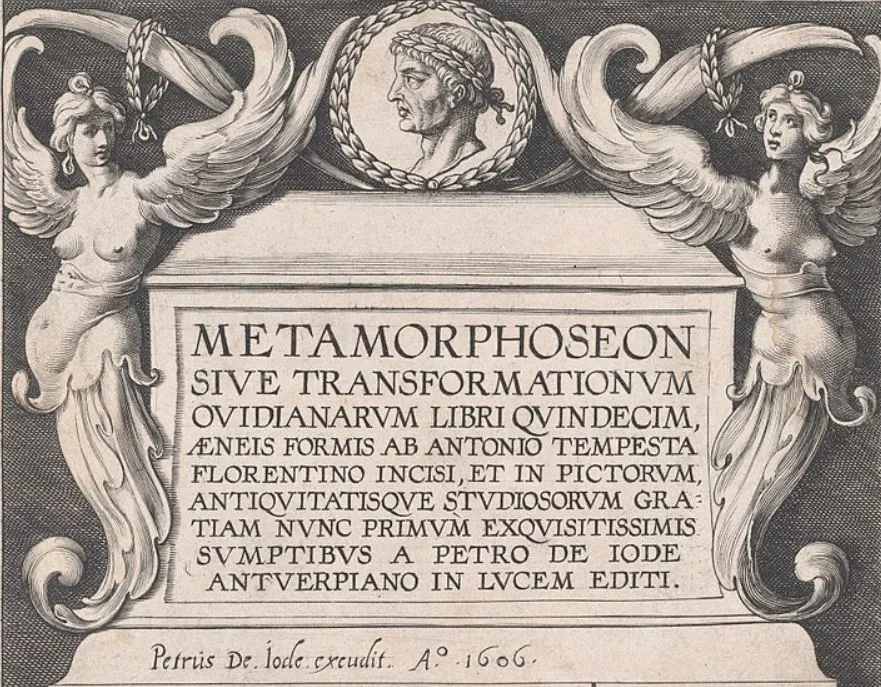
3. It took 3 years to create the sculpture for a particular reason

Even though the artist started working on this sculpture in the year 1622, it wasn’t completed and delivered to the man who commissioned it in September of 1625.
Bernini was a busy man during the 1620s and it’s assumed that he took on various other commissions in between which delayed the work on Apollo and Daphne.
One of the most notable works he worked on at around the same time was the statue of David (not to be confused with Michelangelo’s David and Donatello’s David) which he completed in 1624.
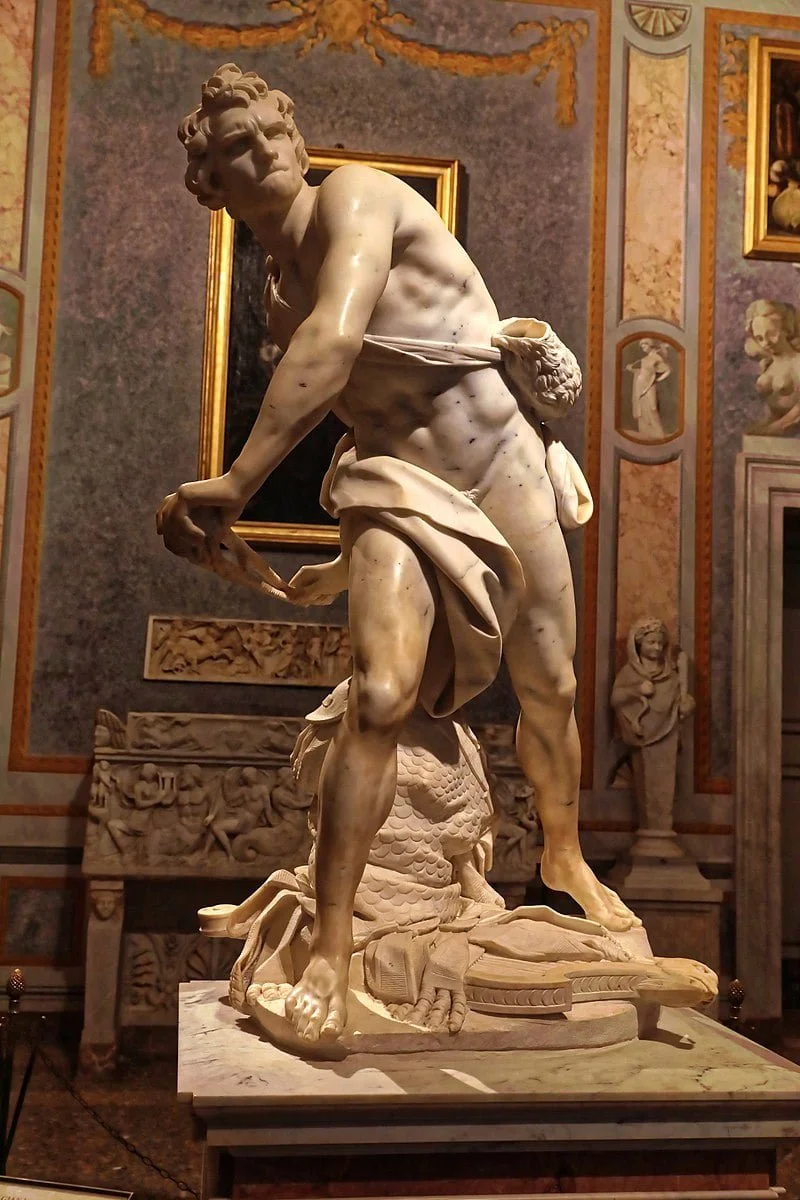
4. The sculpture was commissioned by a rich art collector
The main reason why Bernini’s schedule was filled to the brim with commissions is that he had a patron who admired his work so much that he couldn’t resist ordering more and more sculptures.
This man was called Cardinal Scipione Borghese (1577-1633) of the powerful Borghese family. As the nephew of Pope Paul V, he managed to amass a fortune as the Pope’s secretary, and most of this was spent on luxurious estates and countless works of art.
Most of these works were commissioned or bought to decorate his newly constructed mansion, the Villa Borghese, now a popular museum called the Galleria Borghese in Rome. Upon completion, the statue of Apollo and Daphne was delivered here as well and is still on display at the museum.
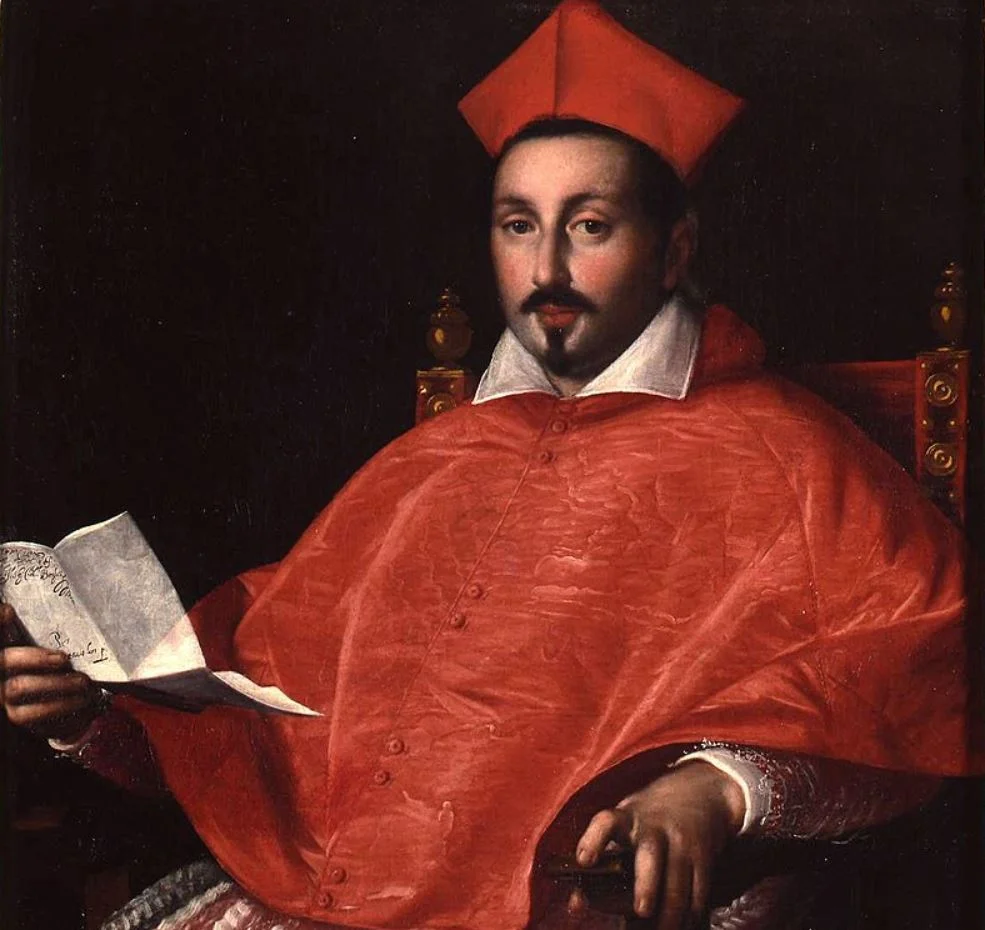
5. It was the final work commissioned by the Cardinal
The sculptures completed during the period in which Bernini received multiple commissioned from the Cardinal literally transformed the world of art. This period is marked as the start of the new era of Baroque sculpture.
Equally important, these works grew Bernini’s reputation to new levels and allowed him to follow his dream and work on works of art to decorate the interior of St. Peter’s Basilica. He had dreamed of this ever since he was a little boy.
This particular sculpture was the final one that he completed for the Cardinal before he expanded his range to works all across Rome, and most specifically, his lifework inside the famous church in Vatican City.
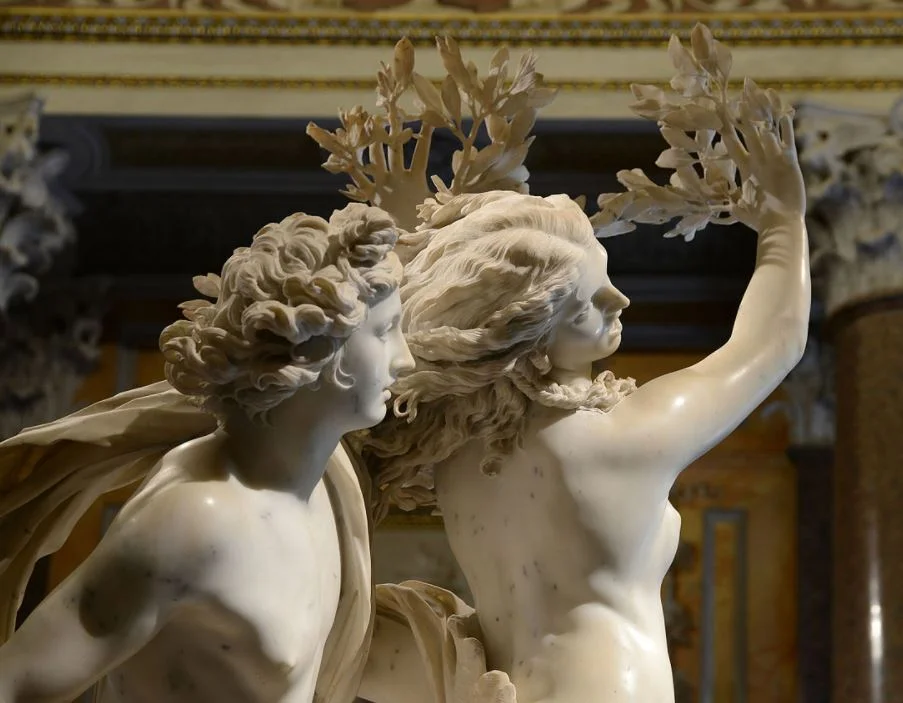
6. It replaced another work by Bernini in the Cardinal’s collection
One of the most remarkable facts about Apollo and Daphne is that Bernini already created a similar sculpture for the Cardinal a couple of years earlier. This work is called “The Rape of Proserpina” and was completed between 1621 and 1622 when the artist was only 23 years old.
Scipione Borghese had already given this sculpture to his friend Cardinal Ludovico Ludovisi, though. This is the reason why he commissioned a new one with a different subject but a similar dynamic.
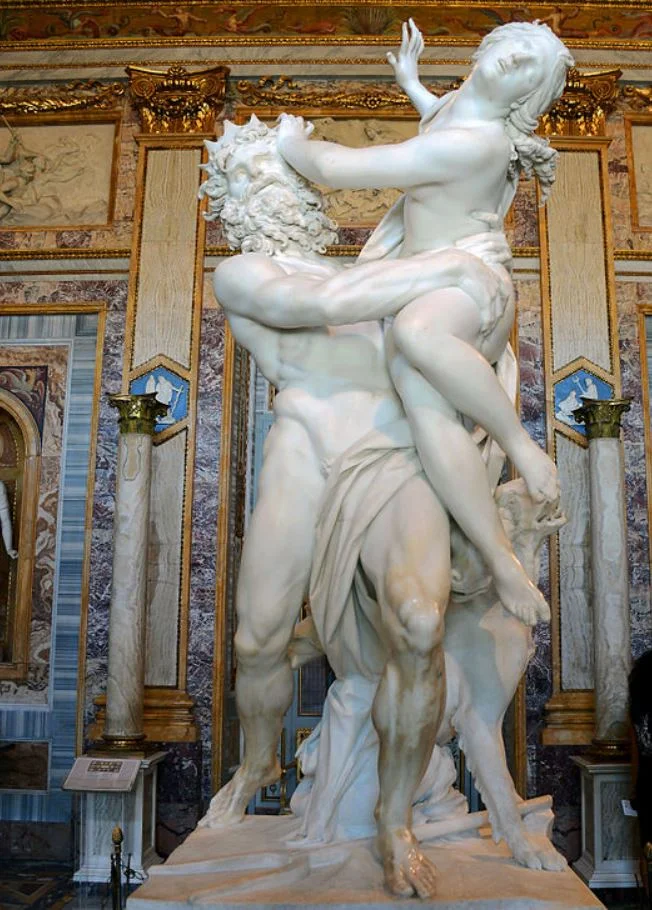
7. It’s assumed that Bernini had quite some help during its creation
Even though some art historians disagree as to how much help Bernini got for the creation of this sculpture, it’s universally agreed upon that he didn’t create the entire work by himself.
This wasn’t unusual because as we mentioned, his agenda was quite full at the time, and creating these monumental sculptures from a solid block of Carrara marble wasn’t done in a couple of weeks, not even months.
It’s assumed that he got help from a member of his workshop named Giuliano Finelli (1601-1653), a man remarkably born in the town of Carrara where the stones to create the sculptures were mined.
His contribution is assumed to be that of the bark and other details of Daphne’s conversion into a tree.

8. The work was supposed to be looked at from the right
When you look at the sculpture from the left-hand side, you can’t make much of it (as you can see in the image below). This means that Bernini sculpted it in such a way that it was intended to be viewed from the right, a view that instantly allows the viewer to capture the entire scene.
This was done because it was originally supposed to decorate the doorway of the Villa Borghese. This makes it all the more remarkable that it was moved to the center of one of the mansion’s rooms.
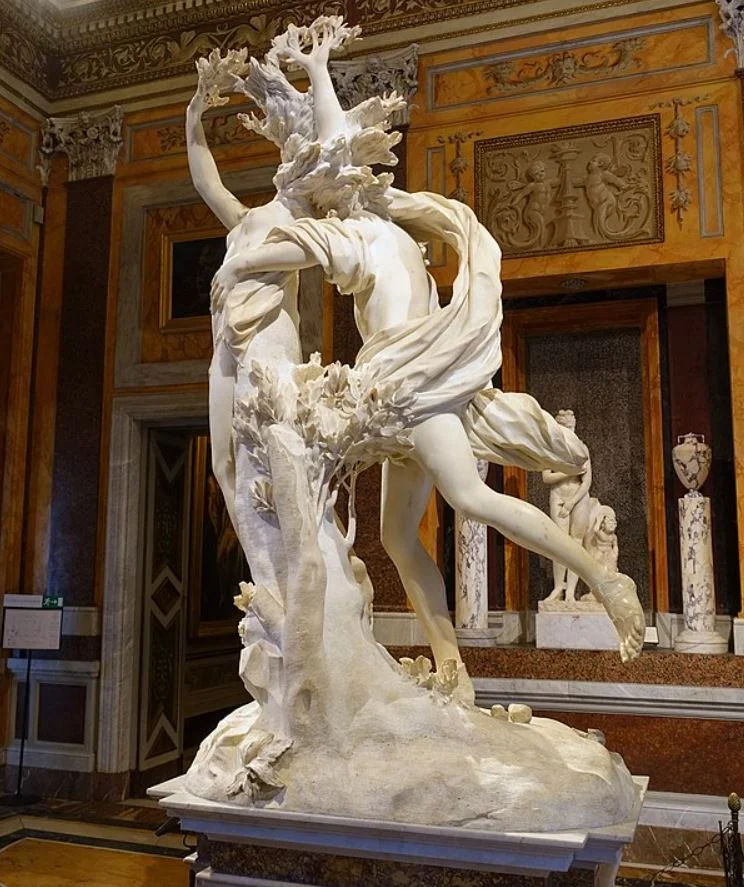
9. It’s generally considered to be one of Bernini’s ultimate masterpieces
The sculpture was moved to a central location in the Villa Borghese because it was most probably one of the most admired sculptures present at the time. Even though Bernini’s reputation sharply dropped following his death, this level of admiration for this particular statue hasn’t faded.
Most of the criticism can be classified as being influenced by changing times without the ability to formulate an objective point of view. This was especially the case during the time that Neoclassical artists revived the austerity of ancient art.
Most recent art historians conclude that this is most definitely one of Bernini’s ultimate masterpieces!

10. It’s one of the main attractions of a famous museum in Rome
If you want to admire this fascinating work of art then you have to visit the same location that it was originally commissioned for, the Galleria Borghese. This has become one of the major art museums in Rome located inside the large Villa Borghese Gardens.
This museum also featured sculptures by Antonio Canova and multiple paintings by Raphael, Titian, and Caravaggio, all considered to be some of the most famous artists in history!
